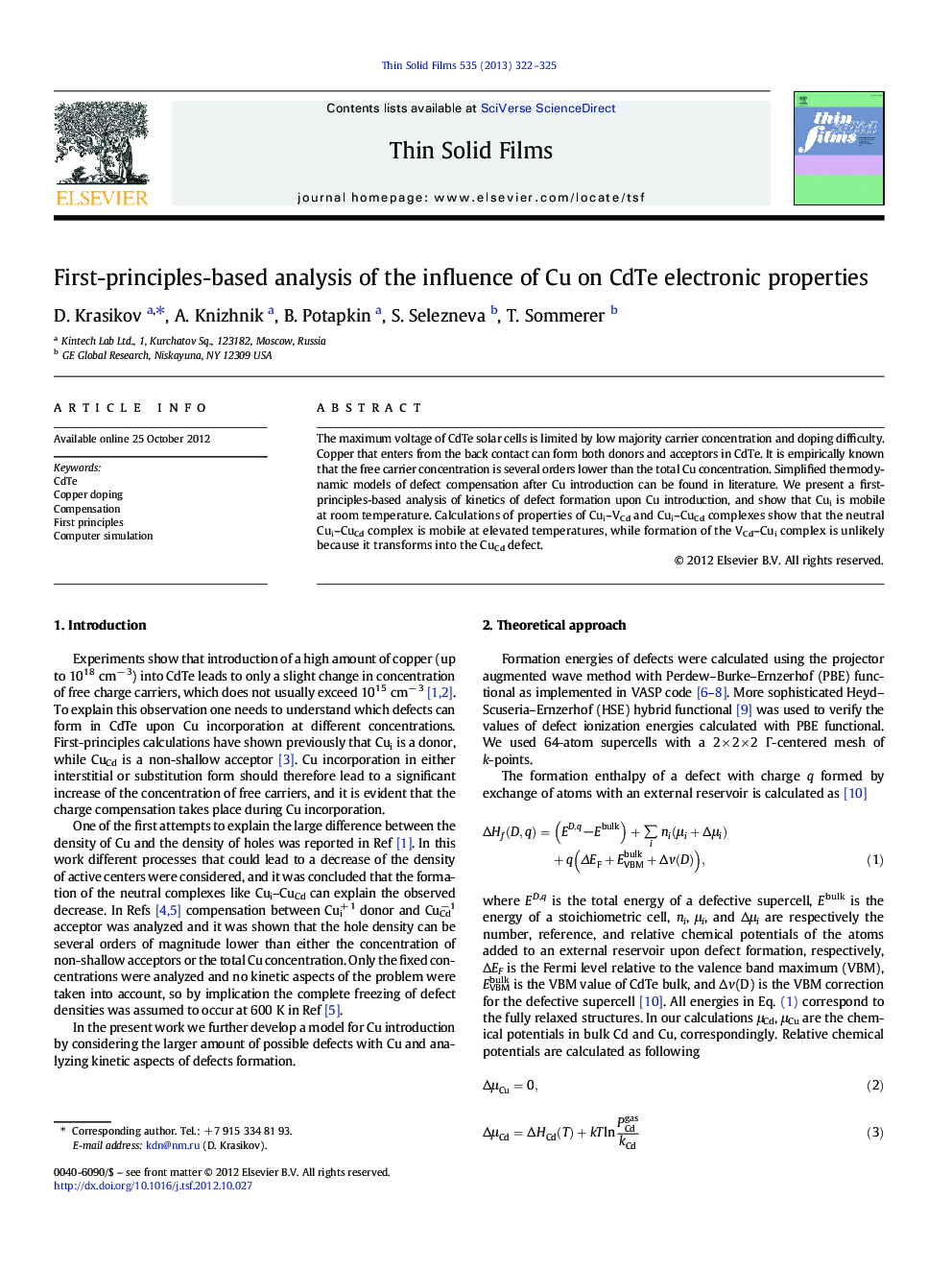| Article ID | Journal | Published Year | Pages | File Type |
|---|---|---|---|---|
| 1666214 | Thin Solid Films | 2013 | 4 Pages |
The maximum voltage of CdTe solar cells is limited by low majority carrier concentration and doping difficulty. Copper that enters from the back contact can form both donors and acceptors in CdTe. It is empirically known that the free carrier concentration is several orders lower than the total Cu concentration. Simplified thermodynamic models of defect compensation after Cu introduction can be found in literature. We present a first-principles-based analysis of kinetics of defect formation upon Cu introduction, and show that Cui is mobile at room temperature. Calculations of properties of Cui–VCd and Cui–CuCd complexes show that the neutral Cui–CuCd complex is mobile at elevated temperatures, while formation of the VCd–Cui complex is unlikely because it transforms into the CuCd defect.
► First-principles calculations of copper defects in CdTe are performed. ► Formation of Cd vacancy + Cu interstitial(Cui) complex is unlikely. ► Cui defect is mobile at room temperature. ► Cui + Cu on Cd-site (CuCd) complex is mobile at elevated temperature. ► CuCd defect forms by kicking-out of the regular lattice Cd by Cui.
